Hello friends in Black and White!.... When you walk through our riverside forests (also called gallery forests) you can see some trees that are striking both for their height (usually over 20 metres) and for the wide size of trunks (up to 1.50 metres in some very old individuals). But the most impressive aspect of this tree can be appreciated when we approach it and see its stem totally covered with robust thorns ranging from 0.6 to 1.2 centimetres. These thorns can be very sharp and hard to the touch. It is because of this that some call it the "Devil's Tree", although in my village it is known as "Habillo".
¡Hola amigos en Blanco y Negro!... Cuando se camina por los bosques de las riberas de los ríos (llamados bosques de galería), se pueden observar algunos árboles que llaman la atención tanto por su altura (que suele sobrepasar los 20 metros) como por la envergadura de sus troncos (hasta 1,50 metros en algunos individuos muy viejos). Pero la más impresionante de este árbol puede apreciarse cuando nos acercamos y vemos su tallo totalmente cubierto de robustas espinas que van desde los 0,6 has los 1.2 centímetros. Estas espinas pueden llegar a ser muy puntiagudas y de gran dureza al tacto. Es debido a esto que algunos le llaman "Árbol del Diablo", aunque en mi pueblo se le conoce como "Habillo".
So this is my entry to today's #monomad challenge.... These are some photos taken from the base of some specimens of this tree, trying to use the thorny texture as a source of monochromatic inspiration.
Entonces esta es mi entrada al reto #monomad de hoy... Se trata de algunas fotos hechas desde la base de algunos ejemplares de este árbol, procurando usar la textura espinosa como fuente de inspiración monocromática.
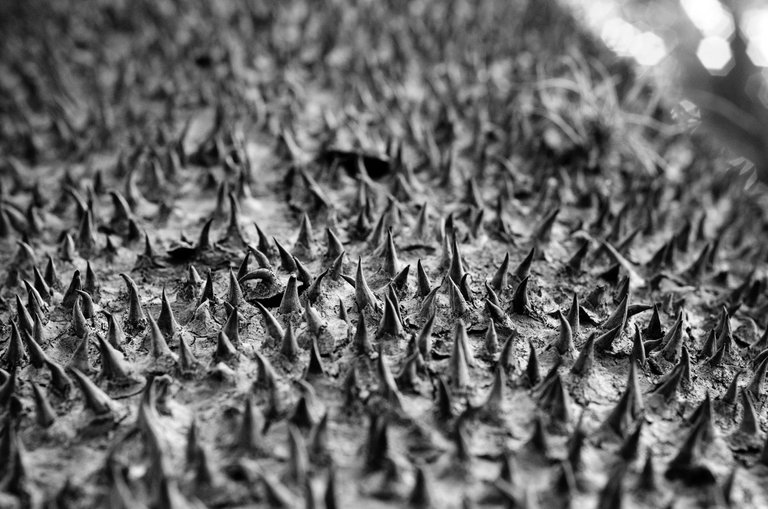

Nikon D7000 + AF Nikkor 50mm f/1.8D FX
To look at this tree up close is impressive and to place your hand on its stem conveys all the defensive strength that such a thorny armour provides.
Mirar de cerca este árbol es algo impresionante y colocar la mano sobre su tallo transmite toda la fortaleza defensiva que provee semejante coraza espinoza.
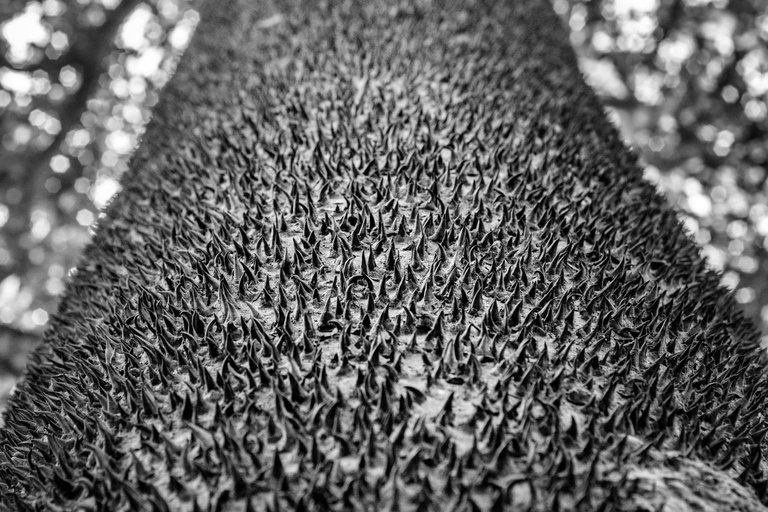
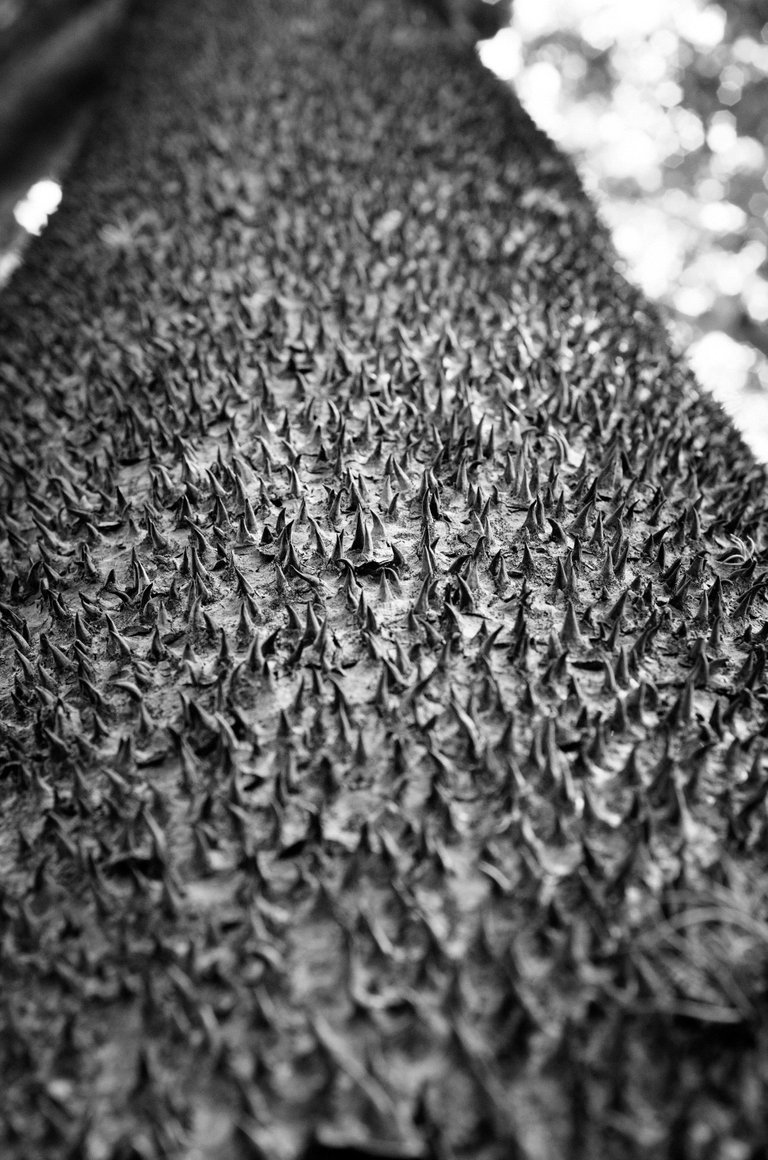
This is the taxonomic information for this species:
Esta es la información taxonómica correspondiente a esta especie:
Kingdom: Plantae
Phylium: Tracheophyta
Class: Magnoliopsida
Ordern: Malpighiales
Family: Euphorbiaceae
Genus: Hura
Species: H. polyandra
Binominal Name: Hura polyandra - (Baill 1958)
Reino: Plantae
Filo: Tracheophyta
Clase: Magnoliopsida
Orden: Malpighiales
Familia: Euphorbiaceae
Género: Hura
Especie: H. polyandra
Nombre Binominal: Hura polyandra - (Baill 1958)
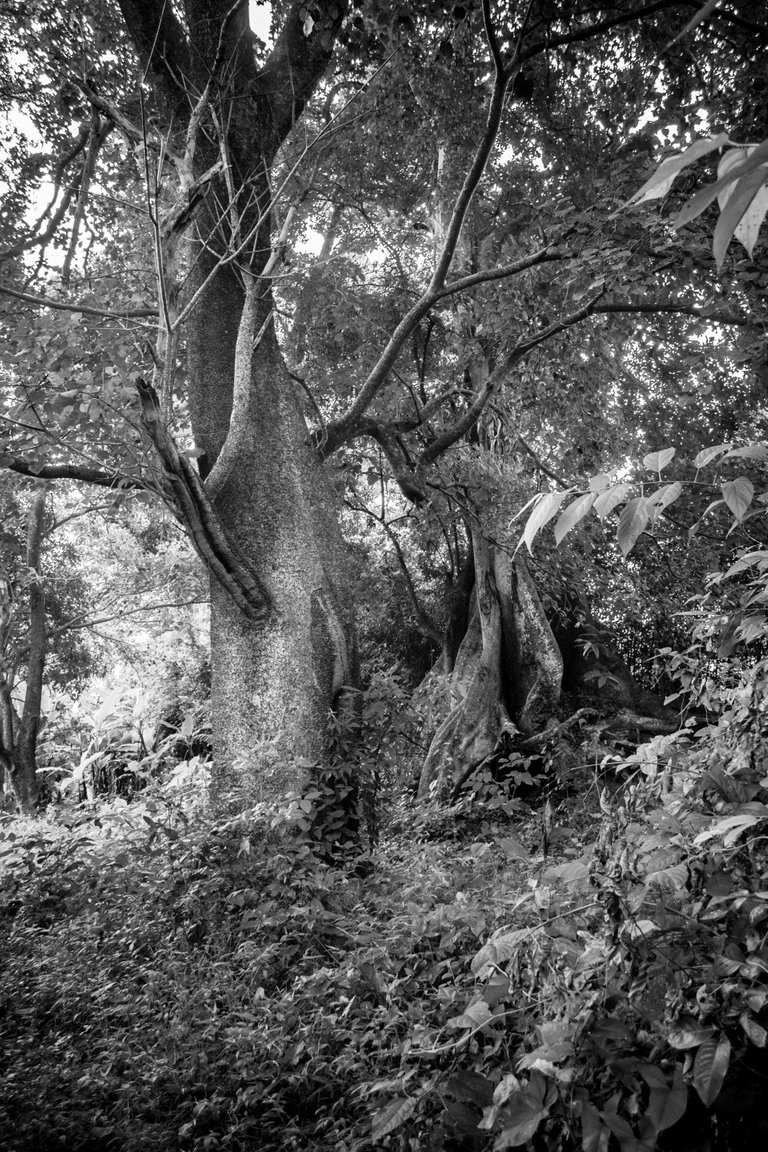
In this photo above, a Habillo can be seen in the middle of the forest next to a river bed. It is the tree on the left. Walking along a path and encountering large, old specimens is an enchanting experience. So I decided to spend some time taking pictures of the stem of this tree.
En esta foto de arriba, se observa un Habillo en pleno bosque aledaño al cauce de un río. Es es árbol de la izquierda. Ir caminando por un sendero y encontrar ejemplares grandes y ancianos, es una experiencia encantadora. Debido a eso decidí pasar un rato haciendo fotos del tallo de este árbol

Fortunately I had my 50mm fixed lens with me which is very bright. So I was able to take these pictures without having to use the flash despite the limited light reaching the forest floor.
Afortunadamente llevaba conmigo mi lente fijo de 50mm el cual es muy luminoso. Así pude hacer estas fotografías sin tener que usar el flash a pesar de la limitada luz que llegaba al suelo del bosque.
Here we have a popular saying for when someone approaches us disrespectfully: "Why don't you better squeeze yourself with a Habillo???"... ha ha ha :-) .... Venezuela and its proverbs!... What a funny thing to say! ha ha ha... :-)
Aquí tenemos un dicho popular para cuando alguien se acerca irrespetuosamente a nosotros: ¿Porqué mejor no te estrujas con un Habillo?... ha ha ha... ¡Venezuela y sus refranes!... ¡Que cosa más graciosa!... :-)
Habillo is a tree widely distributed from Mexico to Venezuela, but tends to disappear further south. It prefers climates with marked periods of drought and rain, as this favours its flowering and fruiting. The seeds and fruit are highly toxic and must be treated with care.
El Habillo es un árbol distribuido ampliamente desde México hasta Venezuela, pero suele desaparecer en más al Sur. Prefiere los climas con marcadas épocas de sequía y lluvias, pues eso favorece su floración y fruto. Las semillas y los frutos son altamente tóxicos y deben ser tratados con cuidado.
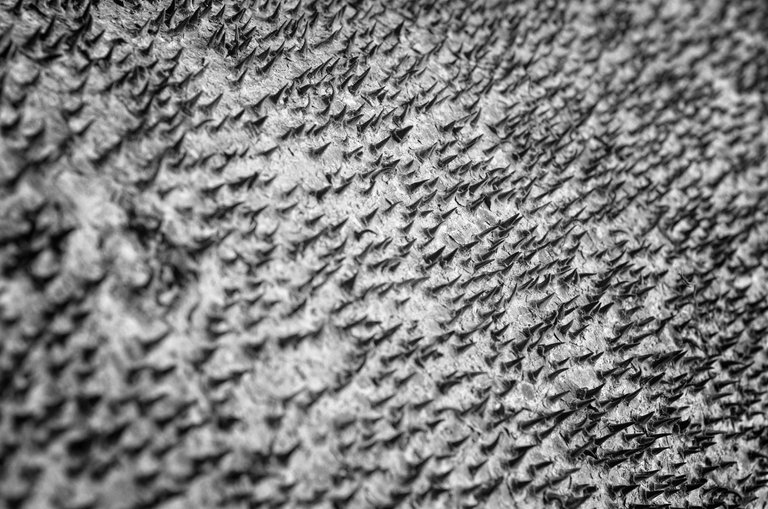
I hope you have found this publication useful and enjoyable. Thank you always for being here and visiting. Greetings to all in this #Hive monochrome corner!
Espero que esta publicación haya sido de su agrado y utilidad. Gracias siempre por estar aquí y visitar. Saludos a todos en esta esquina monocromática de #Hive!
"We make photographs to understand what our lives mean to ourselves." - Ralph Hattersley.
"Hacemos fotografías para comprender lo que nuestras vidas significan para nosotros mismos." - Ralph Hattersley.

Cámara: Nikon D7000 | Objetivo: AF Nikkor 50mm f/1.8D FX
Montalbán, Carabobo, Venezuela.
Estos detalles son hermosos, también suele tomar fotografías de tallos de grandes árboles, pero este en específico todavía no lo he retratado, aunque quizás si lo haya pasado por un lado.